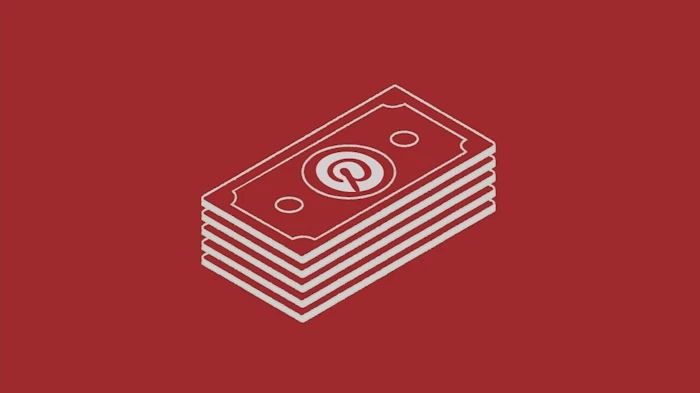2025 Predictions: The Trends Defining Media, Commerce, & Creativity
Contributors
- Justin Hayashi
- Heather Nichols
- Alice Woo
- Lacie Thompson
- Kevin Goodwin
- Brian Kim
- Kelly Dye
- Andrew Richardson
Justin Hayashi | Chief Executive Officer
Short form video is no longer just for Gen Z, it's for everyone. A year ago, TikTok and short-form video were still seen as platforms for younger audiences. That’s no longer the case—every generation, including Boomers, is consuming content this way. Because of this shift, short-form video should be a core part of every brand’s evergreen strategy, no matter the industry. Whether you’re selling beauty products to Gen Z or hearing aids to retirees, this format drives customer acquisition and brand growth.
Marketing Mix Modeling will become more accessible - and more actionable. Historically, marketing mix modeling (MMM) was a slow, expensive, and highly technical process that only the biggest brands could afford. Now, we’re able to run multiple iterations in a pitch process, factoring in macroeconomic trends and full-funnel media impact.
The next big challenge is turning measurement into action. Brands need help making decisions when different models—MMM, multi-touch attribution, and lift studies—all tell a different story. Agencies that simplify this complexity and provide clear, actionable recommendations will be invaluable.
Challenger CPG brands will drive the next wave of retail media growth. Many digitally native brands that once relied solely on DTC are now shifting to omnichannel, investing in retail partnerships at Target, Walmart, and Costco. These "challenger" CPG brands are entering a phase where retail media spend is critical to their success.
Unlike legacy CPG brands, these companies need agile, innovative marketing partners to help them drive in-store sales velocity. Agencies that specialize in retail media and shopper marketing will be in high demand as these brands scale.
Heather Nichols | Chief Revenue Officer
Influencer contracts will increasingly include stipulations on AI usage, to ensure trust and transparency between creators, brands, and audiences. AI will play a critical role in helping creators optimize content through predictive analytics, creative iteration, and distribution strategies, but its role in content generation will remain limited as brands demand human authenticity.
Creators and brands will move beyond the walled gardens of social media. Influencer content will no longer live solely on social platforms—brands will increasingly repurpose high-performing creator content across retail media networks (RMNs), e-commerce, CTV, and even live sports streaming.
Retailers are raising the bar for influencer partnerships, demanding content that drives measurable sales and brand loyalty rather than just engagement metrics.
The rise of nano and micro creators will reshape the influencer landscape. With AI-powered tools democratizing content creation, smaller creators will compete on a larger scale, producing high-quality content without traditional cost and scale barriers.
Brands will prioritize nano and micro influencers for their authenticity and highly engaged niche audiences, often outperforming macro creators in driving real conversions.
Brands that invest in creators, not just their output, will achieve better business outcomes. When creators feel supported and valued, they produce better content—leading to stronger brand relationships, higher engagement, and improved campaign performance. The most successful brands will be those that prioritize long-term creator partnerships, recognizing that empowering influencers leads to sustainable business growth.
Alice Woo | Executive Creative Director
AI will be the creative partner, not the replacement. Expect AI to handle the heavy lifting for repetitive tasks (e.g., resizing creatives, drafting initial concepts), allowing human talent to focus on high-level strategy, storytelling, and crafting emotional resonance. Marketers and agencies will prioritize upskilling teams to use AI tools effectively, creating a hybrid workforce of human creativity and machine precision.
AI will power “always-on” creative testing, allowing marketers to constantly evaluate and refine performance elements based on real-time feedback. Human teams will further interpret insights to balance optimization with long-term brand equity and decide what the feedback means for creative direction.
Stronger collaboration as agencies move toward tighter integration of creative and media-buying teams. AI tools will provide shared insights that allow both sides to align on campaign goals, performance metrics, and creative adjustments.
Consumers continue to expect more from the content that they engage with, and brands will place a greater emphasis on Premium UGC in response. Traditional UGC leans heavily on lo-fi executions and simple talking-head formats, but over-saturation has dulled the effect of this style of creative. Premium UGC will retain the platform-native feel and authenticity that makes UGC relatable but will elevate execution through better concepts, thoughtful scripting, intentional lighting, interesting camera work, and polished editing.
This evolution ensures content not only grabs attention in the crowded feed but also reflects positively on the brand’s quality and value. Brands will need to put out content that stands out while still feeling accessible, driving both performance and brand perception.
Lacie Thompson | SVP of Growth, Affiliate
The rise of AI Agents will change how consumers shop online (and brands will need to evolve they engage with customers and measure their marketing efforts). What comes hand in hand with this trend is a true need for advanced measurement. AI Agents will further muddy the waters when it comes to tracking consumer data. It remains to be seen whether we will be able to tie the activity of an AI agent back to a consumer - but what's certain is that existing tools for advanced measurement, like MMM, will be imperative to understanding the true impact of marketing investments.
What I'm watching for 👀 - how current tactics and best practices around site experience will shift in response to AI agent-generated traffic growth.
Increased transparency around fraudulent behavior taking place in the affiliate space. There are many ways that publishers can game the system, and too few ways for brands to be made aware of such fraud. A growing appetite among senior industry leaders will see a rise in information sharing around problematic publishers and give brands better visibility into the tactics being used by existing or prospective partners.
A greater application of advanced measurement at the affiliate channel-level will reveal the true value that affiliate publishers are driving for brands. Going into 2024, I predicted that the momentum being gained in the affiliate space would spark a broader discussion around the model of the channel - and my prediction for 2025 is an extension of that.
When brands start to see advanced analytics around their affiliate programs, they'll realize that they are actually under-invested in the channel.
Kevin Goodwin | VP of Digital Marketing, Strategy
AI-driven influencer marketing will add opportunity - and noise. We’re seeing a wave of AI-powered influencer tech platforms entering the space, which will shake up the creator economy in a big way. These tools have the potential to streamline content production and expand influencer campaigns, but they’ll also create noise—brands will need to be strategic in how they separate real impact from AI-generated clutter.
Hands-on performance marketing will make a comeback. As platforms roll out more black-box automation—like Meta’s Advantage+ Shopping Campaigns (ASC) and Google’s Performance Max—there’s a growing need for marketers who can step in and optimize beyond what these systems allow. While automation adds efficiency, it also removes control, creating real opportunities for hands-on marketers to drive better results through micro-optimizations and smarter budget allocation.
Smaller platforms will continue to gain market share. Next year, we’ll see the "laggards"—Snapchat, Reddit, Pinterest, even podcast advertising—keep gaining ground. These platforms are investing heavily in ad tech and performance marketing solutions, making them more viable for brands looking for measurable, cost-efficient alternatives to the big players. While they won’t replace Meta, Google, or TikTok, they’ll continue carving out valuable niche opportunities for advertisers.
Brian Kim | Managing Partner, Disruptors
In 2025, the ability to track incrementality across different sales channels and ad formats will be table stakes. More brands are expanding beyond DTC, adding Amazon, retail, and other distribution channels—but without proper measurement, they won’t know what’s actually driving business impact. Brands that rely solely on what ad platforms report will be at a disadvantage—true business growth comes from measuring impact holistically.
Ad creative is the new gold standard for audience targeting, and brands will need to keep up - or risk falling behind. As platforms like Meta and TikTok continue to evolve, creative has become our best lever for reaching the right audience. But brands that rely heavily on handful of ads won’t be able to keep up. Success in 2025 will require rapid creative iteration, testing, and optimization at scale.
AI will play a massive role in this shift, not just in generating creative but in analyzing performance and optimizing in real-time. The brands and agencies that fully embrace AI-driven creative workflows will have a major competitive edge in performance marketing.
Kelly Dye | VP of Influencer Strategy
There will be continued demand for influencers and creators to be platform agnostic. It's no longer sufficient to have a huge following on a single platform - the TikTok controversy that has dominated headlines in 2025 serves as a stark reminder. As the need for cross-posting and repurposing content intensifies, influencers will be required to refine their video editing skills and leverage AI tools to optimize content for different formats.
More influencers will build direct relationships with their audiences through paid subscriptions, offering exclusive content, direct engagement, and additional value beyond social media algorithms. This strategy is an effective way for creators to capture important first-party audience data to expand (and scale) their presence on additional platforms.
The ongoing demand for proven ROI will drive the rise in social commerce. Brands and marketers alike are being put to task to demonstrate the value of their influencer investments, and in turn, the creator space has been forced to fortify its methods for attribution and measurement. For example, TikTok has been experimenting with giving creators the ability to include affiliate links directly in the comments - this capability is an example of how the space is evolving to shorten the distance between exposure to influencer content and making a purchase.
Andrew Richardson | SVP of Advanced Analytics & Measurement
The Subscription Economy Will Keep Growing—But It’s Changing. People love subscriptions, but it’s not just about the traditional box model anymore. We’ve seen some of those rise and fall, but the core appeal—convenience and personalization—is still strong. Whether it’s streaming services, physical products, or premium content, I think we’ll see more brands experimenting with flexible, tailored subscription offerings that really fit into people’s lives.
AI-Driven Creative and Hyper-Personalization Will Reshape How Brands Connect With Consumers. As AI-powered creative and copy testing continue to accelerate, platforms like Meta and TikTok are rolling out more tools that make it easier for brands to test, optimize, and scale content. At the same time, there’s still a huge, largely untapped opportunity in using AI for hyper-personalization—delivering the right message to the right person at the right time. Brands that fully embrace these capabilities will have a major edge in how they engage and convert customers.
Predictive analytics will play a greater role in the digital marketing playbook. We’re going to see more brands leaning into advanced and predictive analytics—not just AI-driven, but a broader shift toward using revenue, sales, and customer data to spot trends before they happen. The ability to anticipate consumer behavior will be a huge advantage in how brands show up in the digital space.
One thing I hope to see (but I’m not sure if marketers will fully embrace) is a real shift toward privacy-focused technologies. Instead of trying to find ways around the loss of cookies, the opportunity is in leaning into zero-party data collection and rethinking how we engage with customers in a more transparent way.
Contributors
- Justin Hayashi
- Heather Nichols
- Alice Woo
- Lacie Thompson
- Kevin Goodwin
- Brian Kim
- Kelly Dye
- Andrew Richardson




